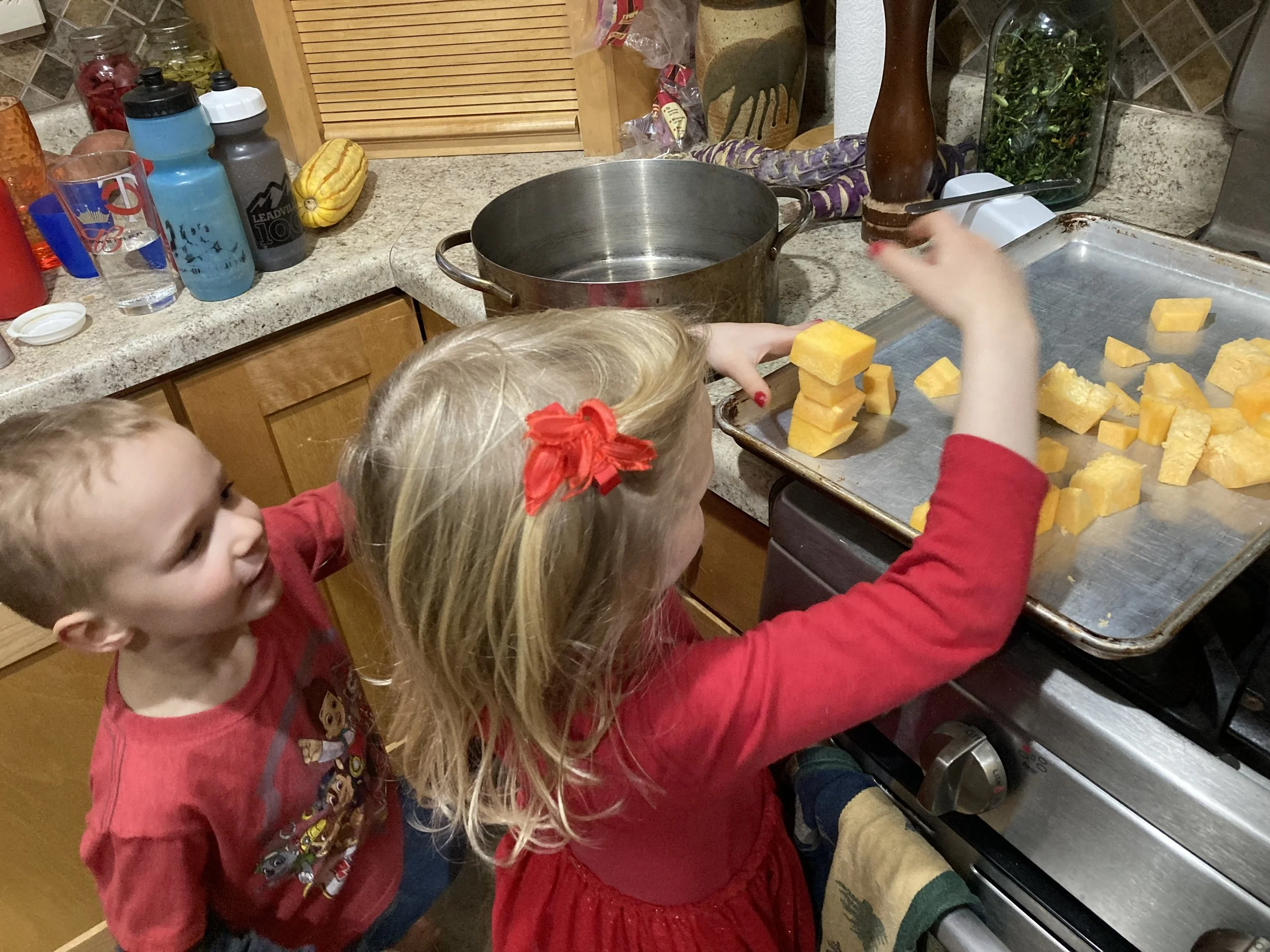Enjoying the garden year-round
Most people think of a garden during the summer and early fall, but even with Wisconsin’s short growing season (typically mid-May to mid to late September), you can enjoy the garden tasties (far) beyond this window.
Spring is the time to plan for the next 12 months. So get your seeds and a plan! Turns out most of these veggies also require little effort after the initial planting and result in high yields.
Carrot-icicles are a conversation piece!
1) Overwinter root vegetables. We had always been tentative about all our precious carrots rotting when attempting to overwinter them. A few years ago we had carrots coming out of our ears and had run out of jars to can any more carrots in the fall. So we thought it was the perfect time to experiment with overwintering our carrots. We covered the carrots with dry leaves (or hay) and a tarp.
We’ve continued to enjoy our garden into December with some hardy kale!
We were so excited to be digging up carrots in the early spring! Supposedly the carrots sweeten up as well. We’ve decided to take advantage of the sporadically nice winter days to dig fresh carrots as an excuse to get some fresh air.
We have since overwintered parsnips. Admittedly, we didn’t know what to do with parsnips the first time we grew them. After some research, we love them simply roasted drizzled in olive oil with garlic salt and rosemary. Our favorite cake is also parsnip cake!
Steamed or oven roasted butternut squash is yummy in the winter months.
This year was our second year overwintering parsnips and we planted so many of the low maintenance veggie we continue to harvest them through the spring.
Tip from experience: Covering the parsnips is far better than digging through the snow trying to find white parsnips with cold, muddy hands.
2) Kale. Rather than pulling out our kale plants, we’ve just left them in and turns out some varieties weather the frost, snow, and freeze/thaws surprisingly well. I find these a nice addition to smoothies, stir fries, and soups.
Purple cabbage mid-winter is a crunchy treat!
3) Pumpkins and squash. Rather than carving all your jack-o-lanterns at Halloween, we spread it over a couple of months then transport “Jack” into pumpkin pancakes for breakfast!
We ended up picking two wheelbarrows of butternut squash last year and had our fair share of squash oatmeal and pancakes.
4) Brussel sprouts. As I’ve shared in an earlier blog post, Brussel sprouts are supposed to be harvested after a couple of frosts.
Having these veggies also allow for a bit of leeway when the first hard frost comes rather than needing to scramble and harvest, wash, and can/eat all the food at once. We typically munch on our Brussel sprouts until Christmas.
5) Cabbage. We grew cabbage for the first time last year, but only ate one head before fall arrived since we had so much other produce in the garden at that point of the season. My husband’s original plan was to make sauerkraut but when I told him I didn’t like sauerkraut, he researched an alternative. He ended up burying ten cabbages and we dug one out every couple of weeks all the way until April!
Bonus: Our kids loved the science experiment on pH indicators after dinner. We added lemon juice to the leftover water after steaming the cabbage to turn it pink (acidic) then raised the pH with baking soda and it turned dark purple. The kids especially liked when it bubbled over due to the carbon dioxide release! Who said science can’t be fun?!?
Roasted parsnips are a family favorite!
Roasted parsnips recipe
4 cups of sliced parsnips, ¼” thick
3 tablespoons extra virgin olive oil
3/4 teaspoon crushed rosemary
1 teaspoon garlic salt
Spread the sliced parsnips in a single layer on a cookie sheet. Pour on olive oil, rosemary, and garlic salt. Using a spatula, mix the oil and seasonings with the parsnips. Bake for 20 minutes in a preheated oven at 400F. Use a spatula to stir the parsnips and spread back out into a single layer on the cookie sheet. Return to the oven for another 20 minutes.







